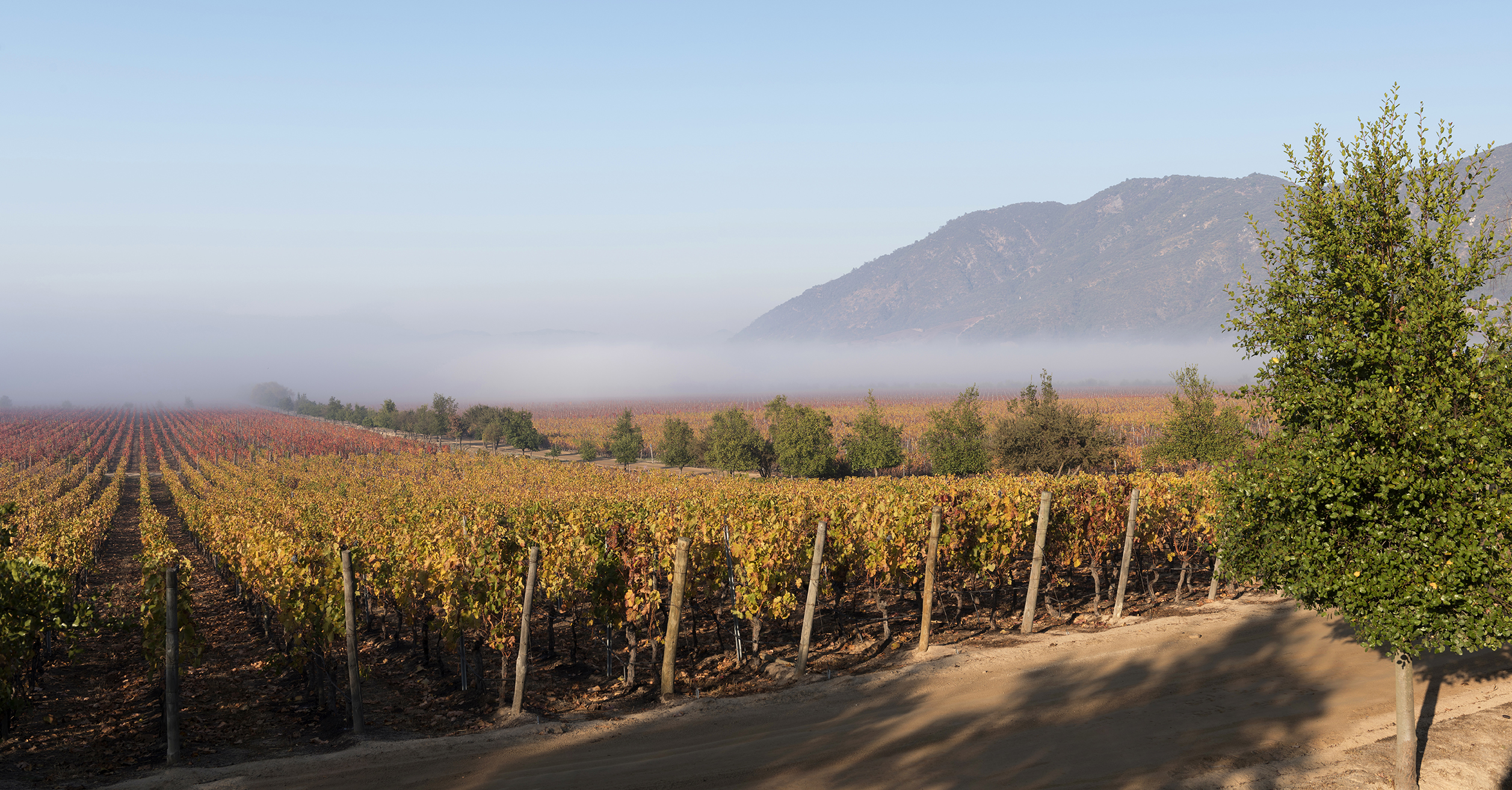Vineyards
Lapostolle wines come from selected terroirs with the best conditions for our different wines. The Apalta Valley, in the Apalta Valley, gives rise to balanced, elegant wines that express the magnificent terroir from which they come.
Apalta Valley
LOCATION: VALLE DE APALTA, 34°36’30.77″S 71°17’46.34″O
The Apalta Vineyard is located in the Apalta Valley, 200 km southwest of Santiago, 68 km from the Pacific Ocean, between the Andes Mountains and the Coastal Range.
Apalta is not an enclosed valley. It is located between the Tinguiririca River, a subaffluent of the Rapel River and the Cordillera de la Costa mountain ranges that end in a horseshoe shape. Both form a barrier to the east and west that delays the arrival of the sun in the morning and attenuates exposure to sunlight in the afternoon. This position offers a good regulation of sunlight, which allows to escape from the excessive heat typical of hot climates.
Thanks to the mountains surrounding the vineyard, the old vines located in the lower portion of the land receive groundwater that provides them with sufficient natural water during most of the growing season.
The Apalta vineyard was planted with Carmenère, Merlot, Cabernet Sauvignon, Petit Verdot and Syrah from 1920 to 2006. Some of the oldest plots, planted in 1920, have vines that were brought from France at the end of the 19th century.
Clos du Lican
LOCATION: SAN JOSÉ, VALLE DE APALTA, 34°36’39.36″S 71°15’1.33″W
Located 100% on a hillside on a tapestry of soils of ancient and granitic origin, bordered by a native sclerophyllous forest of the central zone of Chile, with numerous slopes and encased by the hills. A unique vineyard with southern exposure.
San José
LOCATION: SAN JOSÉ, VALLE DE APALTA, 34°36’39.36″S 71°15’1.33″W

